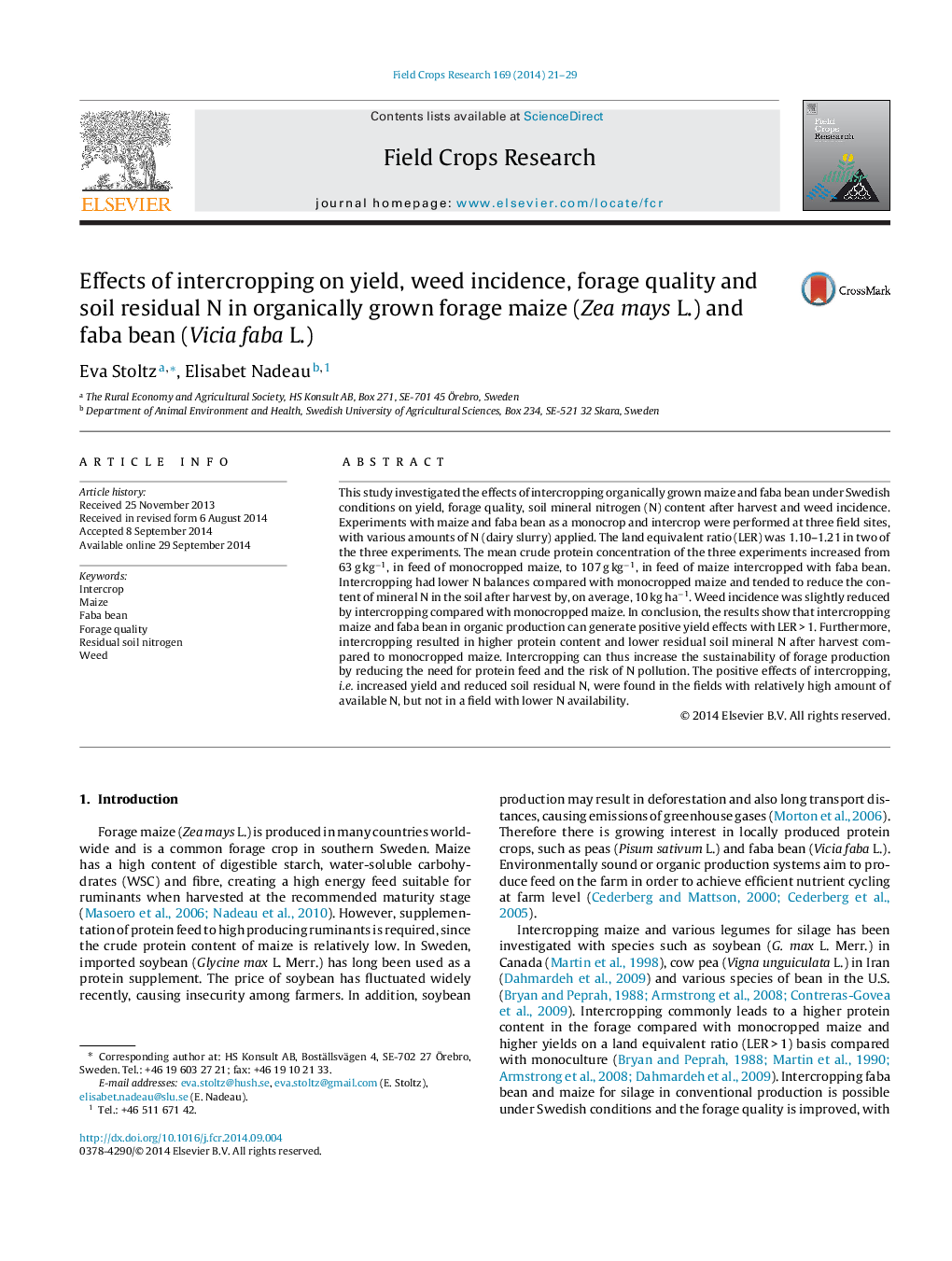| کد مقاله | کد نشریه | سال انتشار | مقاله انگلیسی | نسخه تمام متن |
|---|---|---|---|---|
| 4509944 | 1624694 | 2014 | 9 صفحه PDF | دانلود رایگان |

• Intercropping forage maize and faba bean can generate positive yield effects with LER > 1.
• Forage quality was improved by intercropping with higher protein content than in monocropped maize.
• Intercropping reduced the risk of N leakage after harvest.
This study investigated the effects of intercropping organically grown maize and faba bean under Swedish conditions on yield, forage quality, soil mineral nitrogen (N) content after harvest and weed incidence. Experiments with maize and faba bean as a monocrop and intercrop were performed at three field sites, with various amounts of N (dairy slurry) applied. The land equivalent ratio (LER) was 1.10–1.21 in two of the three experiments. The mean crude protein concentration of the three experiments increased from 63 g kg−1, in feed of monocropped maize, to 107 g kg−1, in feed of maize intercropped with faba bean. Intercropping had lower N balances compared with monocropped maize and tended to reduce the content of mineral N in the soil after harvest by, on average, 10 kg ha−1. Weed incidence was slightly reduced by intercropping compared with monocropped maize. In conclusion, the results show that intercropping maize and faba bean in organic production can generate positive yield effects with LER > 1. Furthermore, intercropping resulted in higher protein content and lower residual soil mineral N after harvest compared to monocropped maize. Intercropping can thus increase the sustainability of forage production by reducing the need for protein feed and the risk of N pollution. The positive effects of intercropping, i.e. increased yield and reduced soil residual N, were found in the fields with relatively high amount of available N, but not in a field with lower N availability.
Journal: Field Crops Research - Volume 169, December 2014, Pages 21–29